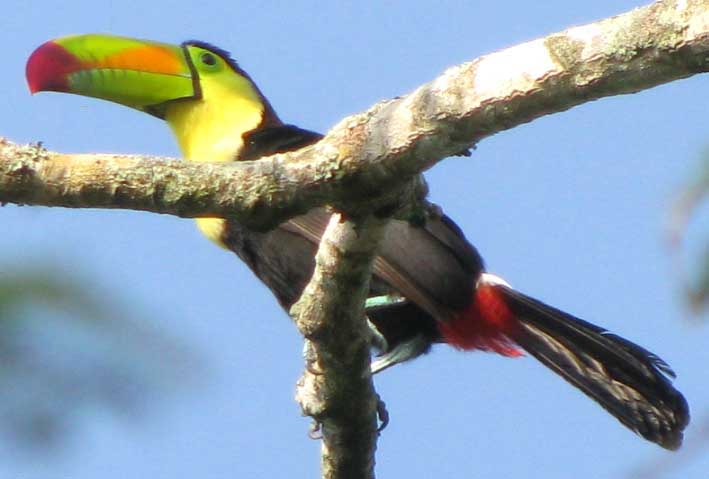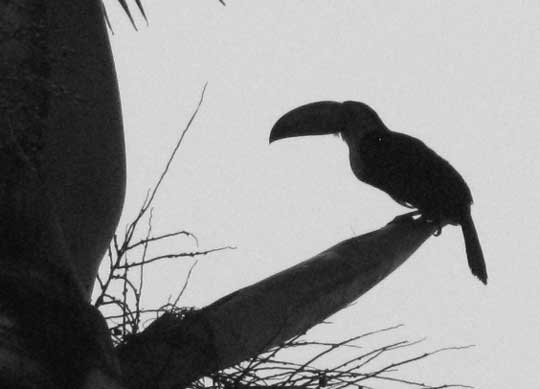Excerpts from Jim Conrad's
Naturalist Newsletter

from the April 3, 2011 Newsletter issued from Hacienda Chichen Resort beside Chichén Itzá Ruins, central Yucatán, MÉXICO; limestone bedrock, elevation ~39m (~128ft), ~N20.676°, ~W88.569°
THE TOUCANS RETURN
In February when the Chinese Banyans grew heavy with pea-sized figs, Keel-billed Toucans came up from their usual haunts farther to the south and stayed a few days gorging themselves (see below). Once the figs were depleted they disappeared without my ever getting more than a colorless silhouette picture of one.
This Monday once again I heard the bird's familiar call, like a gigantic tree frog, RRRK-RRRK-RRRK, went to take a look, and by golly this time there were three and they were much less secretive about their whereabouts than before. I got a decent shot, seen above.
These are big birds, about 22 inches long (56 cm), several inches longer than an American Crow.
from the February 13, 2011 Newsletter issued from Hacienda Chichen Resort beside Chichén Itzá Ruins, central Yucatán, MÉXICO; limestone bedrock, elevation ~39m (~128ft), ~N20.676°, ~W88.569°
KEEL-BILLED TOUCAN IN SILHOUETTE
Friday morning before the sun was well up, upon exiting his shelter he landed at the tip of a big inflorescence sheath of a Royal Palm, all of which showed up against the brightly silvery sky in silhouette, as shown below:

At least in that picture you can see that the Keel-billed Toucan's beak is relatively more massive than that of the araçari. There's simply no other bird species in this area whose profile can be confused with the Keel-billed Toucan's.
Keel-billed Toucans are distributed from southeastern Mexico to northern South America.